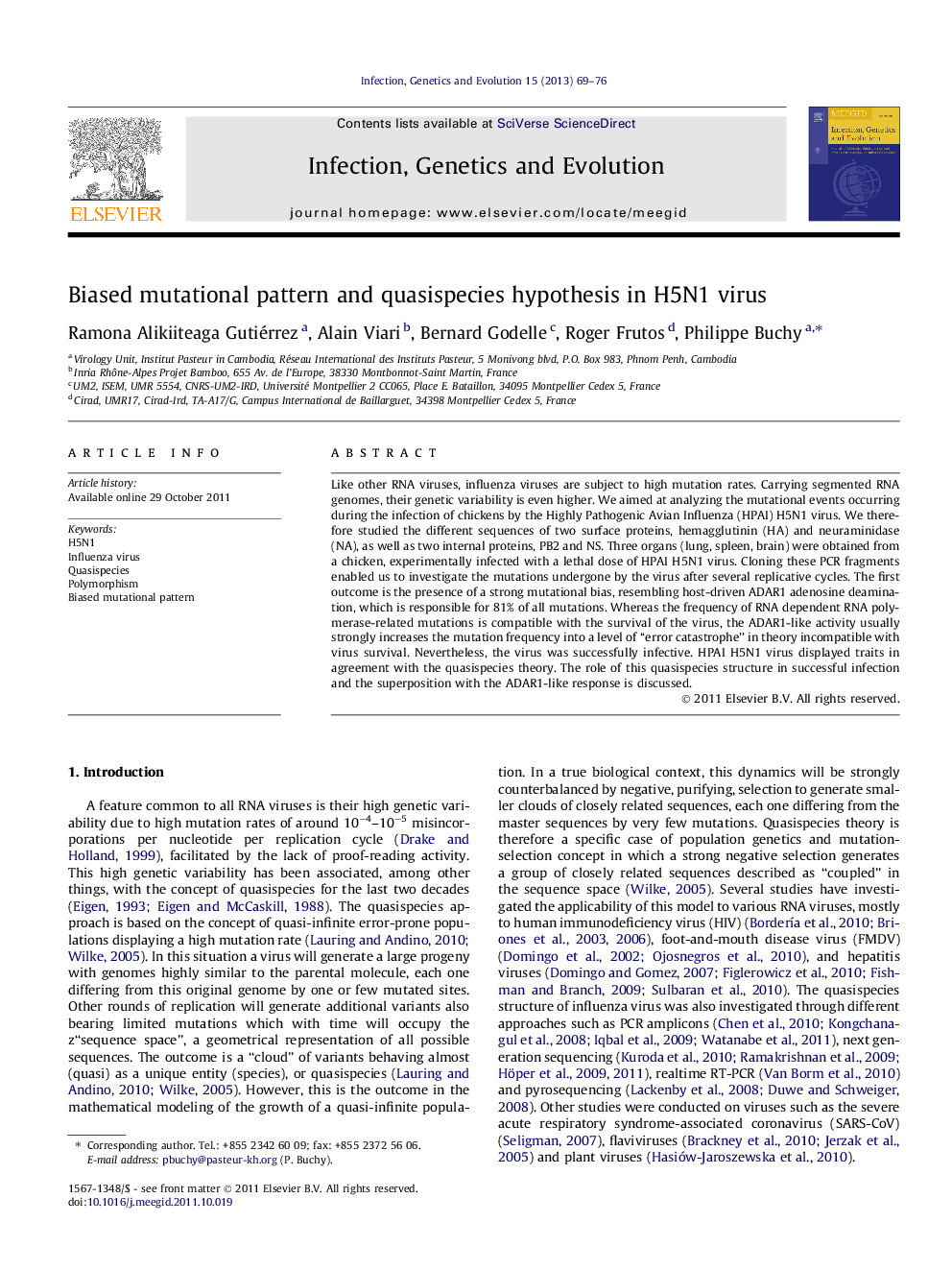| کد مقاله | کد نشریه | سال انتشار | مقاله انگلیسی | نسخه تمام متن |
|---|---|---|---|---|
| 2823053 | 1570188 | 2013 | 8 صفحه PDF | دانلود رایگان |

Like other RNA viruses, influenza viruses are subject to high mutation rates. Carrying segmented RNA genomes, their genetic variability is even higher. We aimed at analyzing the mutational events occurring during the infection of chickens by the Highly Pathogenic Avian Influenza (HPAI) H5N1 virus. We therefore studied the different sequences of two surface proteins, hemagglutinin (HA) and neuraminidase (NA), as well as two internal proteins, PB2 and NS. Three organs (lung, spleen, brain) were obtained from a chicken, experimentally infected with a lethal dose of HPAI H5N1 virus. Cloning these PCR fragments enabled us to investigate the mutations undergone by the virus after several replicative cycles. The first outcome is the presence of a strong mutational bias, resembling host-driven ADAR1 adenosine deamination, which is responsible for 81% of all mutations. Whereas the frequency of RNA dependent RNA polymerase-related mutations is compatible with the survival of the virus, the ADAR1-like activity usually strongly increases the mutation frequency into a level of “error catastrophe” in theory incompatible with virus survival. Nevertheless, the virus was successfully infective. HPAI H5N1 virus displayed traits in agreement with the quasispecies theory. The role of this quasispecies structure in successful infection and the superposition with the ADAR1-like response is discussed.
Journal: Infection, Genetics and Evolution - Volume 15, April 2013, Pages 69–76